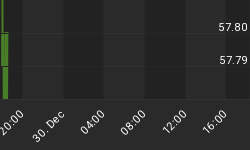By some estimates, $76 billion in illegal activity every year is enabled by bitcoin, but the icing on the cake is Facebook’s vague plans for its own cryptocurrency and the dawning of a New Year for which the U.S. Federal Reserve felt it necessary to issue another warning about the criminal underside of crypto.
Last week, Federal Reserve Governor Lael Brainard brought this into full view, warning that Facebook’s digital currency plans could not only be very dangerous to consumers and advantageous to criminals, but could also threaten financial stability. In a speech delivered in Frankfurt on Wednesday, Brainard said: “Libra, like any stablecoin project with global scale and scope, must address a core set of legal and regulatory challenges. A significant concern regarding Facebook’s Libra project is the potential for a payment system to be adopted globally in a short time period and to establish itself as a potentially new unit of account.”
In June, Facebook revealed plans to unleash its Libra cryptocurrency on the market, sparking rebuttal from Fed Chairman Jerome Powell, who promised that the idea would meet with significant regulatory hurdles.
And research piling up about the role of cryptocurrencies in “transforming the black markets by enabling ‘black e-commerce’”, as the Australian study notes, comes as Libra hits a wall and seems to be without a concrete plan as to how to move forward.
The Criminal Underside of Crypto: How Bad Is It, Really?
In late November, Elliptic--a crypto forensics analytical outfit, published its analysis of XRP cryptocurrency, saying that $400 million in XRP had been used for what it described as “illicit activity”.
That’s really a drop in the bucket, according to Cointelegraph, which likes to point out that all forms of currency have a criminal underside, and that the XRP example shows that only 0.2% of transactions are illicit.
At the same time, XRP isn’t the favored cryptocurrency of the criminal underworld because it was really designed for use by institutional and commercial financial institutions.
The criminals’ favorite cryptocurrency is, hands down, bitcoin.
According to one analyst, Jonathan Levin, co-founder and COO of Chainalysis, bitcoin accounts for 95% of illicit cryptocurrency transactions.
And, of course, it’s not just the use of crypto for illicit activities, but the theft of crypto itself.
Also in late November, a CipherTrace blockchain forensics report cited by Reuters said that so far, cryptocurrency theft had skyrocketed this year, year-over-year, with losses from digital currency crime hitting $4.4 billion in the first nine months of 2019. That’s a 150% increase over the first nine months of 2018.
The bottom line: Thieves are now looking to score a lot bigger than before.
“Criminals chase money and the money is right here and ripe for the taking. Little attacks are often easy to defend against, but targeted attacks are far more lucrative,” CipherTrace CEO Dave Jevans told Reuters.
What about 2020?
2020 isn’t looking that promising for crypto, with bitcoin on a steady decline since early 2018 thanks to a number of big scandals that have not only burned investors, but have led to much greater scrutiny, the likely result of which will be more regulation.
Related: Mormon Church Accused Of Building $100 Billion Portfolio Using Charity Funds
The Fed’s new warning won’t help, either. And the scrutiny is international, making for wild volatility.
Chinese President Xi Jingping in October announced full support for blockchain technology, which should have been a huge boost for crypto--except that it wasn’t.
What Beijing was really saying was this: Blockchain and crypto are two very different things, and the People’s Bank of China is clamping down on crypto and warning consumers away from it.
And back in the U.S., U.S. Congressman Paul Gosar (Republican-Arizona) has introduced the “Crypto-Currency Act of 2020” in an attempt to clarify the federal regulation of cryptocurrencies.
From China to the U.S. to Europe, federal authorities still have no idea how to regulate crypto, but it’s a vacuum that isn’t necessarily contributing to any crypto stability.
Earlier this year, U.S. Treasury Secretary Steven Mnuchin branded cryptocurrency a “national security” risk, and that sentiment looks set to strengthen in 2020.
By Michael Kern for Safehaven.com

















